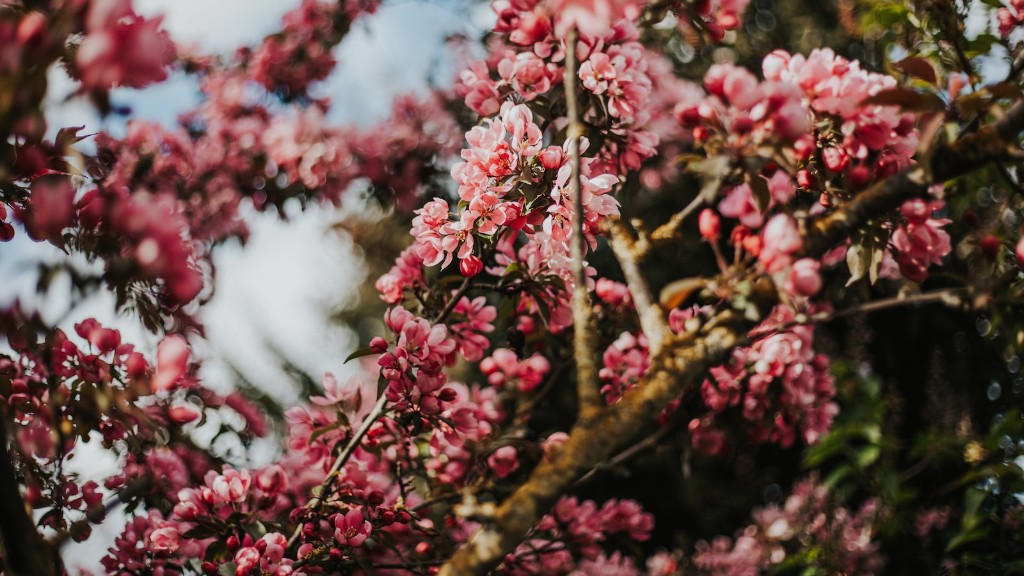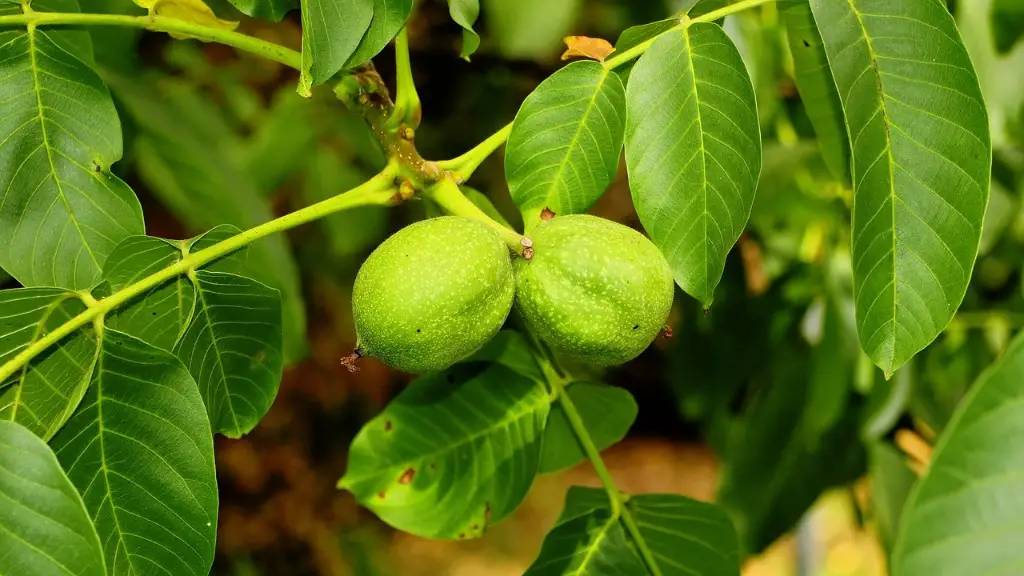Meyer lemon trees are a great way to bring a taste of summer into your home or garden. Pruning your Meyer lemon tree can help keep it healthy, encourage new growth, and help produce more fruit. Here’s how to take care of your Meyer lemon tree and keep it looking its best.
Before you begin, make sure you’ve got the right tools. It’s easiest to prune a Meyer lemon tree with pruning shears, loppers, and a saw. Also, be sure to wear protective gloves and eye protection, as citrus trees can have sharp thorns.
Begin pruning your tree by removing all dead wood. Dead wood not only looks unsightly, but it can also lead to disease. If you find any branches with little or no growth, cut them off at the base. Be sure not to leave any stubs, otherwise, they could become infected.
Next, remove any branches that are growing at odd angles. Citrus trees tend to grow up and outward. Pruning your tree helps direct the growth of the branches and promote better air flow. When pruning, try to leave the tree with an open and airy canopy.
Now, start to shape your tree. Start by trimming off the tips of lengthening branches. This encourages bushier growth, which will create more fruit-bearing branches. Don’t cut off too much of the branch, as this can stunt growth. Cut at a 45-degree angle to further encourage new growth.
Once you’ve finished pruning, you’re ready to fertilize your tree. Meyer lemons are typically fertilized during the growing season, starting in the spring. Use a fertilizer that’s specifically designed for citrus trees, as this will ensure you’re providing the correct balance of nutrition.
Once everything is done, your tree should be ready to thrive. Pruning your Meyer lemon tree in a pot is a great way to ensure that it remains healthy and produces plenty of fruit. Keep up with regular maintenance and you’ll have a healthy, productive tree that you can enjoy for years to come.
Winter Pruning
Winter is a great time to prune a Meyer lemon tree, as it’s the tree’s dormant season. Begin by removing any deadwood from the previous season—if you’ve previously pruned during the summer, you won’t need to do this step. Doing this helps ensure that your tree stays healthy during the winter months.
Next, remove any damaged or diseased branches. These are often indicated by discoloured, withered, or spotted leaves. If you’re seeing any, carefully remove them with pruning shears, being sure to make the cut at a 45-degree angle as mentioned above. Once all the diseased branches are removed, your tree should be good to go.
When pruning during the winter months, it’s important to note that you don’t want to remove too much or else the tree won’t produce as much fruit in the summer. Aim to trim back only 10-15% of the tree’s limbs. Make sure to leave any thicker branches as they’ll be more fruitful.
Winter pruning also helps encourage a healthy, symmetrical growth pattern. Remove branches that are growing at odd angles, and be sure to leave space between branches so that air can circulate. This will help ensure that your Meyer lemon tree grows back strong and healthy.
Once your tree is pruned, don’t forget to give it a good dose of fertilizer. Fertilizing during the winter will help to ensure that tree gets all the nutrients it needs in order to survive and flourish.
Summer Pruning
Summer pruning is a great way to keep your Meyer lemon tree healthy and productive. During the summer months, you should begin by trimming off any deadwood and damaged or diseased branches. As mentioned before, be sure to make the 45-degree angle cut to further encourage new growth.
Once you’ve removed the deadwood, it’s time to begin shaping your tree. Start by trimming off the tips of branches in order to encourage bushier growth. Again, you don’t want to remove too much, as this can stunt growth. A 10-15% trim should be sufficient.
Once the shaping is done, you can also begin to thin out the canopy. Citrus trees tend to grow up and outward, and you want to ensure that there’s plenty of space to allow for good air circulation. Remove branches that are growing too close together, and try to leave the tree with an open and airy canopy.
When you’re finished, your Meyer lemon tree should be ready to thrive. Keep up with regular pruning and fertilizing, and you’ll be able to enjoy the fruits of your labor for years to come.
Late Summer Pruning
Late summer pruning—generally from late August through October—can help ensure your Meyer lemon tree stays healthy and productive. Begin by removing any damaged or diseased branches and deadwood. Just like before, try to leave the tree with an open and airy canopy.
Next, start shaping the tree by trimming off the tips of branches. This should help encourage bushier growth, and will help ensure the tree is able to produce more fruit-bearing branches. Aim to remove about 10-15% of the tree’s branches, being sure not to cut too much off of the branches, otherwise it could stunt the tree’s growth.
Finally, late summer pruning encourages a healthy and symmetrical growth pattern. Remove any branches that are growing at odd angles, and be sure to leave plenty of space between the branches to allow for good air circulation. This will help prevent disease and pests, as well as encourage new growth.
Your Meyer lemon tree is now ready to enjoy. Keep up with regular pruning and fertilizing, and you’ll be able to enjoy the fruits of your labor for years to come.
Pruning in Early Spring
Early spring is a great time to prune a Meyer lemon tree. Begin by removing any deadwood from the previous season. Doing this helps ensure that your tree stays healthy throughout the year. Also, check for any damaged or diseased branches, and remove them with pruning shears.
Next, start shaping the tree by trimming off the tips of branches. This will help encourage a bushier growth and more fruit-bearing branches. Aim to remove about 10-15% of the tree’s branches, being sure not to cut too much off of the branches, otherwise this could also stunt growth.
Once you’ve finished shaping the tree, check for any branches that are growing at odd angles. Remove these to encourage a healthy, symmetrical growth pattern. Make sure to leave adequate space between branches to allow for good air circulation.
When you’re finished, your Meyer lemon tree should be ready to thrive. Keep up with regular pruning and fertilizing, and you’ll be able to enjoy the fruits of your labor for years to come.
Mulching
In addition to pruning a Meyer lemon tree, you should also mulch your tree in the summer months. Mulching helps protect the tree from extreme temperatures, and helps retain moisture in the soil. Organic mulch, such as shredded bark or wood chips, is ideal for a Meyer lemon tree, as it helps to promote healthy soil and encourages the growth of beneficial organisms.
When you’re mulching, start by creating a bed of organic matter around the base of the tree. Place the mulch about three inches thick, making sure not to pile it up against the trunk of the tree. This can cause the tree to become diseased or rot slowly over time.
If you’re having trouble with pests or disease, you can also use a barrier type of mulch, such as copper or plastic. Keep in mind that this type of mulch only works to protect the tree from outside sources, so it doesn’t replace the need to prune or fertilize the tree.
Mulching is an important step to keep in mind when it comes to pruning a Meyer lemon tree. In addition to helping the tree stay healthy and produce more fruit, mulching can help make your Meyer lemon tree look its best.





